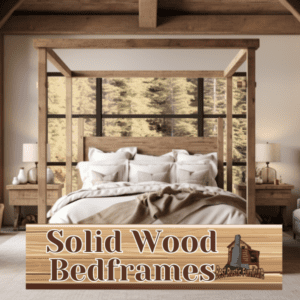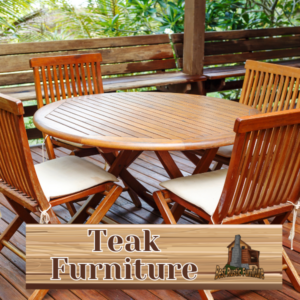
Design trends are constantly evolving, and one popular aesthetic that has gained significant traction is rugged appeal, which focuses on embracing the raw and natural elements in design. This concept celebrates imperfections, incorporates organic materials, utilizes natural textures and colors, emphasizes functionality and durability, and blends harmoniously with the surrounding environment. The raw and natural aesthetic of rugged appeal brings a sense of authenticity and a connection to the outdoors into interior and exterior spaces. It has its origins in the appreciation for natural beauty and has evolved over time, with modern interpretations incorporating contemporary design elements. Embracing rugged appeal in design allows for the creation of spaces that exude a unique charm and a captivating blend of simplicity and sophistication.
Key takeaways:
- Embracing imperfections: Rugged design embraces the beauty of imperfections, adding authenticity and character to a space.
- Incorporating organic materials: Using natural materials such as wood, stone, and metal enhances the raw and natural aesthetic of a design.
- Utilizing natural textures and colors: Earth tones and rough textures create a harmonious and organic atmosphere, bringing a sense of nature indoors.
What is Rugged Appeal in Design?
Rugged Appeal in Design refers to the embracing of raw and natural elements in the design aesthetic. It involves seamlessly incorporating rough textures, worn materials, and organic forms into the design to authentically connect with nature. This design approach not only celebrates imperfections but also showcases the innate beauty of the natural world. Rugged appeal can be observed in various design styles, such as rustic, industrial, and vintage, where the use of weathered wood, exposed brick, and distressed finishes is commonly seen. By integrating these elements, it adds character and a comforting sense of warmth to the space, ultimately creating a uniquely inviting atmosphere.
The Raw and Natural Aesthetic
In the world of design, there’s a growing trend that celebrates the beauty of imperfections and the raw essence of nature. Welcome to the captivating realm of the raw and natural aesthetic. In this exploration, we’ll uncover the allure of embracing imperfections and the art of incorporating organic materials. Get ready to dive into a world where rugged appeal meets creative design, a world where nature’s raw beauty takes center stage.
Embracing Imperfections
Embracing imperfections is a central aspect of the rugged appeal in design, which adds character and uniqueness to spaces. Here are some ways to naturally incorporate this aesthetic:
- Choose weathered materials, such as distressed wood or aged metals, with innate imperfections.
- Showcase objects with visible wear and tear, such as vintage furniture or antique accessories.
- Create visual interest by utilizing rough textures and uneven surfaces, for instance, exposed brick or chipped concrete.
- Highlight the beauty of natural flaws, such as knots in wood or cracks in stone.
- Achieve a balanced contrast by combining imperfect elements with sleek and modern design features.
By embracing imperfections, you can create a design that celebrates the authenticity and uniqueness of raw materials, ultimately giving your space a distinctive and captivating appeal.
Incorporating Organic Materials
Incorporating organic materials is a key aspect of achieving a rugged appeal in design. By using natural and sustainable materials, designers can create a harmonious connection between the built environment and the natural world. Here are some examples of organic materials that can be incorporated into rugged design:
- Wood: Utilize reclaimed wood or timber with natural textures to add warmth and character to a space.
- Stone: Incorporate raw and unpolished stones for a rugged and earthy aesthetic.
- Plant fibers: Integrate materials like jute, sisal, or bamboo to bring in an organic and tactile element.
- Natural fabrics: Use linen or organic cotton to evoke a sense of comfort and simplicity.
- Leather: Use genuine leather to add a touch of ruggedness and durability to furniture or accessories.
By incorporating these organic materials, designers can create a design that not only looks visually appealing but also respects and celebrates the natural world.
Utilizing Natural Textures and Colors
Unleash the beauty of nature in your design with the captivating section on utilizing natural textures and colors. Dive into the world of earth tones and natural hues, where the palette comes alive with the organic vibrancy of the environment. Explore the allure of rough and weathered surfaces, a true testament to the rugged charm that brings character and depth to any space. Let’s discover how these elements can transform your design into a raw and natural masterpiece.
Earth Tones and Natural Hues
When integrating earth tones and natural hues into design, one can create a harmonious and authentic aesthetic that exudes rugged appeal. These colors inherently evoke a sense of connection to the natural environment, bringing warmth and simplicity to any space. Browns, greens, and warm greys are among the examples of earth tones, while natural hues encompass the colors found in wood, stone, and vegetation. By incorporating these colors into design elements like walls, furniture, and accessories, one can create a grounded and serene atmosphere. To effectively incorporate earth tones and natural hues, consider using natural materials such as reclaimed wood, incorporating plants and greenery, and selecting textiles and furnishings with warm, natural tones.
Rough and Weathered Surfaces
Rough and weathered surfaces are key elements of rugged appeal in design. They add character and authenticity to the space. Here are a few ways to incorporate rough and weathered surfaces into your design:
- Exposed brick walls or reclaimed wood paneling can create a rustic and weathered look.
- Using textured finishes like distressed paint or rough plaster adds a worn and aged feel.
- Utilizing materials like concrete or natural stones with rough edges can give a rugged and raw appearance.
- Consider incorporating salvaged materials or antique furniture, which often have weathered surfaces.
Remember to balance these elements with other design elements to create a cohesive and visually appealing space.
Emphasizing Functionality and Durability
Emphasizing functionality and durability, this section dives into two crucial aspects of design: practical design elements and sturdy, long-lasting materials. Discover how these key factors contribute to the rugged appeal and raw beauty that many designers seek to integrate into their creations. From the ingenious use of space to the incorporation of resilient materials, we explore how these elements work hand in hand to create designs that not only withstand the test of time but also satisfy our practical needs.
Practical Design Elements
Practical design elements play a crucial role in creating an appealing and sturdy design. These elements not only contribute to the overall aesthetic but also serve a purpose. To maximize functionality in a rugged space, it is essential to incorporate furniture with built-in storage or utilize multipurpose items. Opting for durable materials such as reclaimed wood or concrete ensures longevity and the ability to withstand wear and tear. Additionally, thoughtful placement of lighting fixtures provides ample illumination, while ergonomic furniture promises utmost comfort. A real-life example that perfectly showcases the significance of practical design elements is the renovation of a rustic cabin. In this project, the designer ingeniously integrated hidden compartments for storage and utilized industrial-style lighting fixtures to achieve a rugged yet highly functional space.
Sturdy and Long-lasting Materials
Sturdy and long-lasting materials are crucial for achieving a rugged appeal in design. When aiming for durability, here are some essential materials to consider:
- Stone: Incorporate natural stone such as granite or slate for countertops, flooring, or accent walls. These materials are renowned for their strength and resistance to wear and tear.
- Wood: Opt for hardwoods like oak or teak when selecting furniture and flooring. Not only are these materials strong, but they also provide a warm and inviting aesthetic.
- Metal: Choose metals like stainless steel or wrought iron for fixtures, hardware, and structural elements. These materials are renowned for their durability and ability to withstand harsh conditions.
- Concrete: Utilize concrete for walls, floors, or even furniture. Its robust nature guarantees longevity and adds an industrial touch to the design.
- Composite Materials: Consider materials such as fiber cement or engineered wood for exterior siding or decking. These materials offer the appearance of natural materials while providing enhanced durability and resistance to elements.
Blending with the Surrounding Environment
Embrace the raw and natural in design as we explore the section on blending with the surrounding environment. Discover how design can harmonize with the beauty of natural landscapes and create a seamless connection with the outdoors. Let’s dive into the fascinating ways in which the natural world inspires and influences design, bringing a rugged appeal to our living spaces.
Harmonizing with Natural Landscapes
Harmonizing with natural landscapes is a central component of the rugged appeal in design. This entails skillfully blending man-made structures with the encompassing environment for a cohesive and authentic aesthetic. To accomplish this, designers can:
- Incorporate natural materials such as stone or wood that perfectly complement the landscape.
- Utilize earthy tones and colors that imitate the hues of the surrounding environment.
- Integrate landscaping elements like green roofs or gardens to establish a seamless transition between indoor and outdoor spaces.
- Create designs that conform to the natural contours of the land.
By harmonizing with natural landscapes, rugged design imbues a sense of unity and connection to the surrounding environment.
Connecting with the Outdoors
Connecting with the outdoors is a fundamental component of rugged charm in design. It entails crafting areas that seamlessly merge with the natural surroundings and enable a harmonious link to the outdoors. This can be accomplished by utilizing extensive windows or glass walls that offer panoramic views of the surroundings, outdoor living spaces or terraces that extend the living area into nature, and integrating natural materials like wood or stone that imitate the elements found outside. Embracing the outdoors in design fosters a sense of tranquility and cultivates a closer bond with the environment.
To enrich the connection with the outdoors in your own space, contemplate integrating features such as:
1. Outdoor seating areas where you can unwind and appreciate the natural splendor around you.
2. Spacious sliding glass doors that effortlessly extend your living space to the outside.
3. Infusing natural elements like plants or water features into your design.
4. Utilizing sustainable and eco-friendly materials that minimize the impact on the environment.
5. Designing outdoor spaces that encourage outdoor activities such as gardening or outdoor cooking.
By forging a connection with the outdoors in your design, you can create a space that not only exudes beauty but also fosters a profound admiration for the natural world.
The Evolution of Rugged Appeal in Design
From the origins of rugged appeal to its modern interpretations, we dive into the fascinating evolution of this design aesthetic. Discover the diverse influences and the raw, natural elements that have shaped this captivating style. With a fusion of history and contemporary creativity, we explore how rugged appeal continues to captivate designers and enthusiasts alike. Get ready to uncover the essence of this timeless trend and its impact on the world of design.
Origins and Influences
The rugged appeal in design can be attributed to a variety of origins and influences. To summarize, the table below highlights some key aspects:
| Origins | Influences |
|---|---|
| Industrial Revolution | Minimalism |
| Brutalist Architecture | Sustainable Design |
| Scandinavian Design | Organic and Natural Materials |
| Japanese Aesthetics | Wabi-sabi Philosophy |
| Outdoor Adventure | Outdoor and Adventure Lifestyle Trends |
These diverse origins and influences have profoundly impacted the rugged appeal in design, blending raw and natural elements with functionality and durability. Designers find inspiration from these sources to create spaces that embrace imperfections, incorporate organic materials, and harmonize with the surrounding environment. The evolution of the rugged appeal in design continually progresses with contemporary interpretations that celebrate the raw and natural aesthetic.
Modern Interpretations
Modern interpretations of rugged appeal in design involve a contemporary take on embracing raw and natural elements. Designers are incorporating organic materials like reclaimed wood and stone, as well as utilizing natural textures and earth tones. Functionality and durability remain key, with practical design elements and the use of sturdy, long-lasting materials. Blending with the surrounding environment is emphasized, whether through harmonizing with natural landscapes or connecting with the outdoors. The evolution of rugged appeal in design showcases its origins and influences while adapting to modern sensibilities. Prioritizing the balance between nature and functionality, modern interpretations of rugged appeal highlight the integration of these two aspects.
Some Facts About Rugged Appeal: Embracing the Raw and Natural in Design:
- ✅ Rugged appeal design embraces the raw and natural beauty of materials. (Source: Our Team)
- ✅ The style originated from the architectural ideas of Le Corbusier and was popularized by Alison and Peter Smithson, British architects. (Source: Our Team)
- ✅ Rugged appeal design prioritizes functionality and honest expression of materials, featuring bold geometric forms and minimal ornamentation. (Source: Our Team)
- ✅ Rugged appeal design blends raw and authentic materials to create a bold and commanding presence. (Source: Our Team)
- ✅ Contemporary art and design draw inspiration from rugged appeal design, incorporating raw materials, bold forms, and timeless elegance. (Source: Our Team)
Frequently Asked Questions
What is Brutalist design?
Brutalist design is an architectural style characterized by its raw and imposing forms, showcasing the unadorned beauty of materials, particularly raw concrete. It originated from the architectural ideas of Le Corbusier and gained popularity through the work of British architects Alison and Peter Smithson.
What are the key characteristics of Brutalist design?
Key characteristics of Brutalist design include the use of raw and authentic materials, bold and commanding presence, practical and efficient design, timeless allure, and streamlined aesthetics. It prioritizes functionality and showcases the honest expression of materials through bold geometric forms and minimal ornamentation.
How has Brutalist design influenced contemporary art and design?
Brutalist design has inspired contemporary art and design by incorporating raw materials, bold forms, and timeless elegance. Contemporary artists and designers often blend Brutalist elements with other styles to create fresh expressions. The style’s nostalgic qualities and retro appeal have resonated with a younger generation, influencing aesthetics, photography, graphic design, sculpture, and mixed-media art.
What is rustic interior design?
Rustic interior design is based on the concept of early settlers in the US during the 19th century who made their homes far from cities. It focuses on ruggedness and natural beauty, using organic elements such as wood, stone, leaves, and other materials. Rustic design celebrates imperfections and character in each piece, aiming to create a warm and inviting atmosphere.
What are the common elements and color palette used in rustic interior design?
Common elements in rustic interior design include wood features like exposed beams, furniture, floors, or walls. It incorporates comfortable blankets, throws, and pillows, as well as textures such as braided rugs, woven fabrics, or baskets. The color palette is inspired by nature, with forest greens, rich browns, wood grains, tans as main colors, and muted reds, blues, black, and plaid patterns as accent colors.
How can rustic design be blended with contemporary style?
Rustic design can be mixed with contemporary style as both emphasize natural tones and textures. Contemporary design’s clean lines can blend with rustic’s rugged appeal. This combination creates a harmonious balance where rustic elements bring warmth and character to the space, while contemporary elements add a touch of modernity and simplicity.






